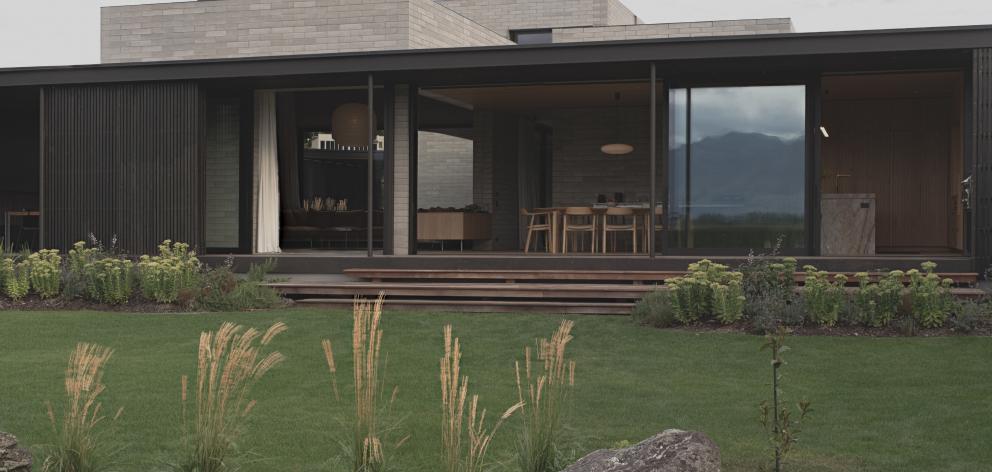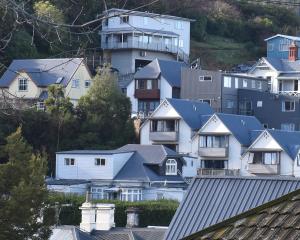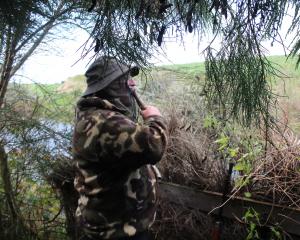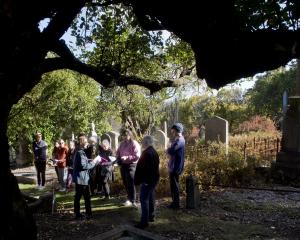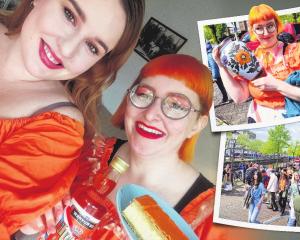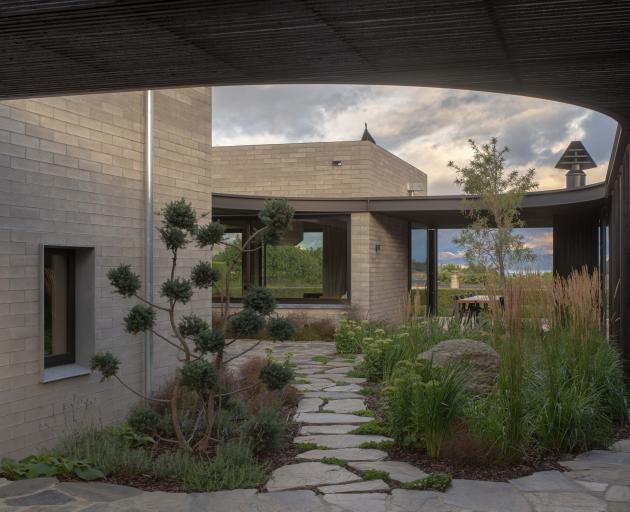
Located within walking distance of Wanaka’s town centre, this site has been occupied by the same homeowners for more than two decades.
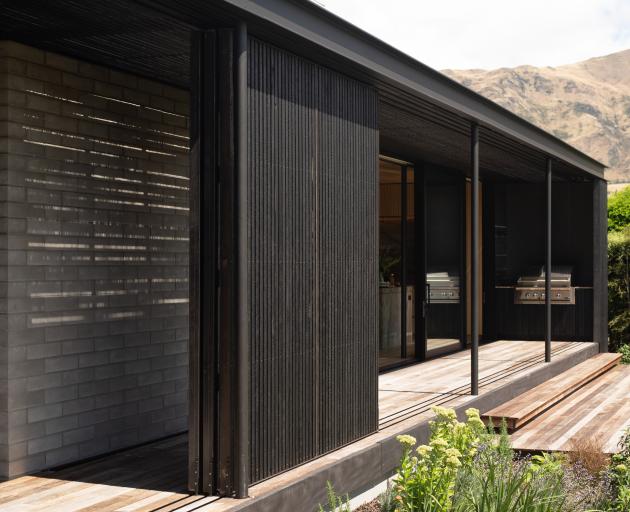
As Wanaka transformed from quaint town to busy urban area and greater intensification looked likely, the couple considered creating a home to accommodate several generations and serve as a retreat in the changing landscape.
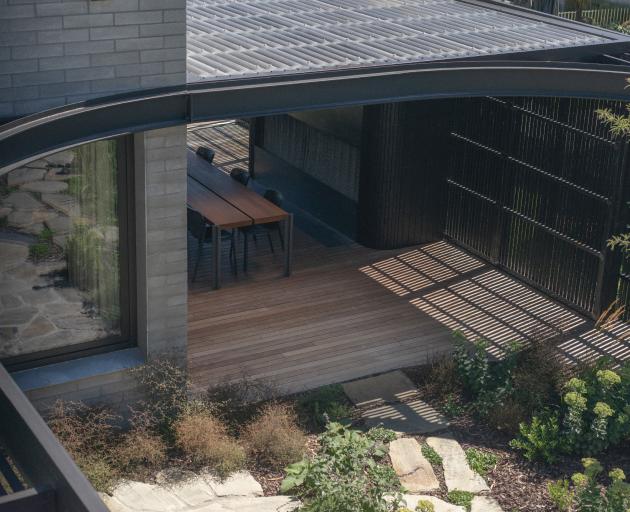
To design it, they turned to Auckland-based Roberts Gray Architects, where their son and daughter-in-law, Jimmy and Elspeth Gray, and fellow director, Nick Roberts, collaborated on the project. Meanwhile, their daughter, Georgina Vink, of Constructure, was the main design engineer.
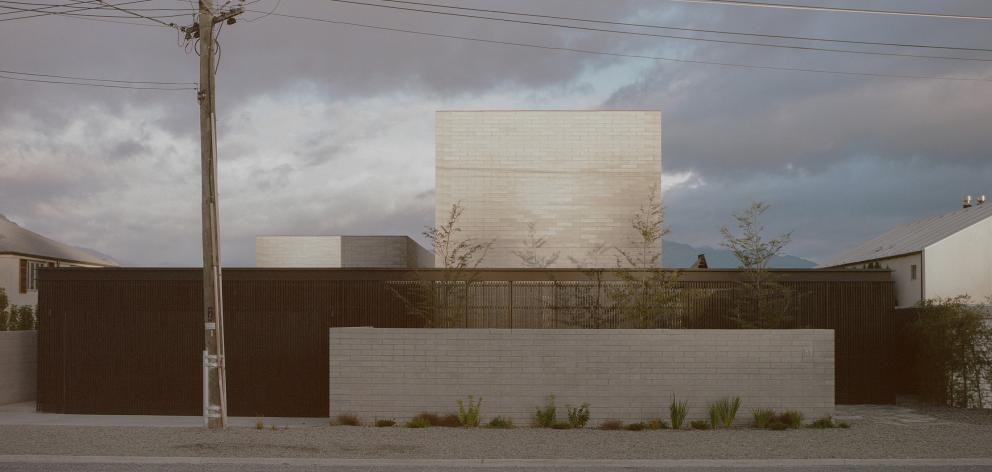
Intensification in one form or another is a given and the new house needed to stand on its own, "no matter what happens around it".
From the street, the facade is deliberately abstract to create a sense of intrigue. This "draws you into the house, which opens up once you get inside the courtyard".
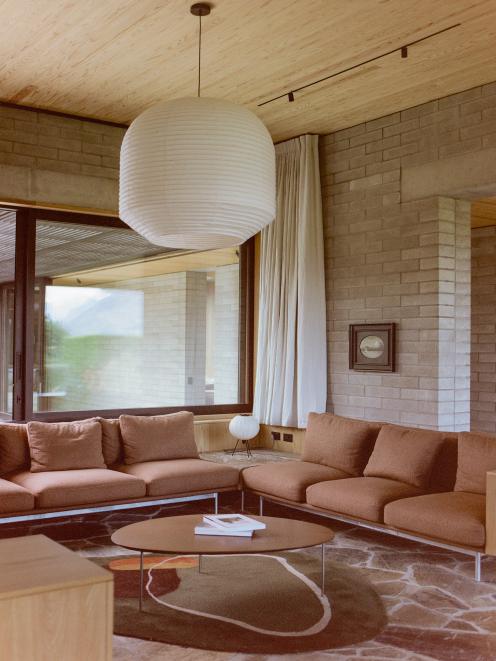
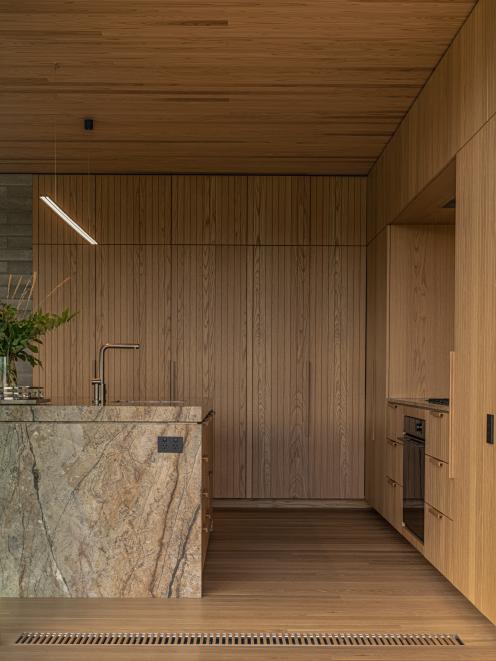
The property consists of a series of solid, concrete block forms, tied together by lightweight screens, courtyards and carefully placed window and door openings. These not only give a balance between openness and enclosure but create dynamic interplays of light and shadow within.
Gray says the house needed to work equally well for two people and for extended family, including grandchildren.
"[One] consideration revolved around the ability to find privacy when accommodating large numbers of people. The solid forms become static zones — lounges, bedrooms, bathrooms — places to escape to. The lightweight forms that link these spaces are more transitional — kitchens, corridors, outdoor spaces and courtyards."
The experience of living in the house is also different depending on the season. In winter, a low-lit, dark-clad mudroom transitions to a light-filled interior with framed views of the mountains. In summer, a casual meander over stone steps links a series of gardens to a spacious central courtyard at the heart of the home.
While the local vernacular is usually understood to be a gable roof and stone walls, it was decided to "push back" at what that might mean.
"When you look at the [region’s] old stone buildings, they’re real mass construction so that played into the mass of the concrete block [forms]", he says.
Living spaces in Wanaka are often positioned on the upper floor to prioritise views rather than a connection to the site, but here the architects decided to do the opposite.
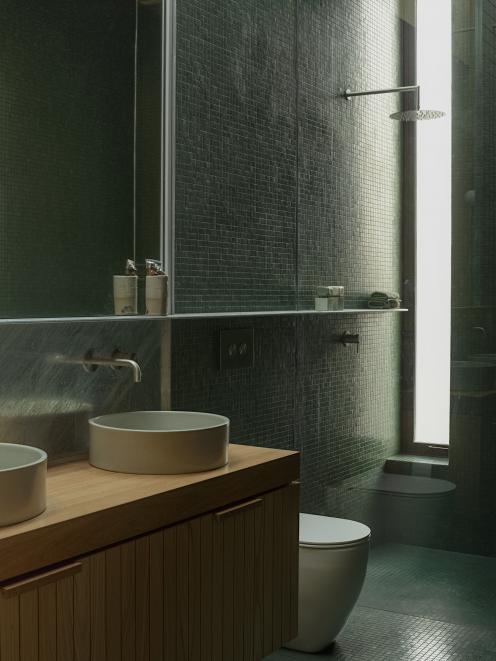
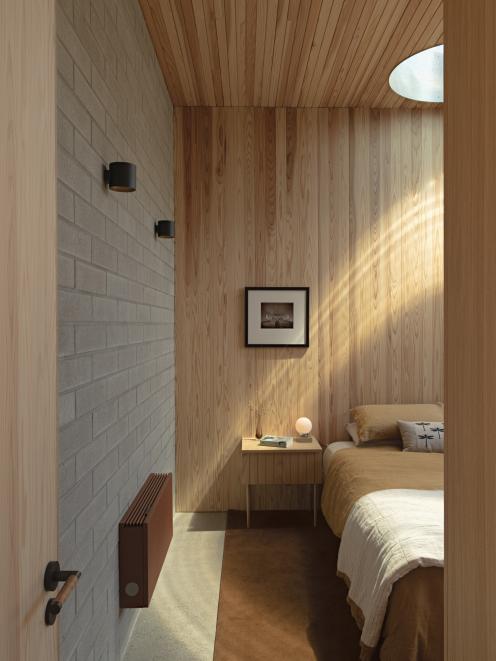
In this case, all the living areas and two of the bedrooms are on the ground floor. Only the main bedroom and en suite are above.
There is still a lake and mountain view from the lower level but instead of living "out on a balcony", the occupants can open the doors and sit in a courtyard, protected from the wind and sun.
The result is a house that is more liveable and more fluid, he says.
"Also it’s about appreciating that you’re in this amazing landscape when you go out for a coffee. You’re in this amazing landscape when you go out on a bike ride. It’s everywhere anyway so it’s about trying to find beauty within the space that you’ve created and looking back at that as well."
A limited palette of natural materials creates continuity between inside and out.
Charred Japanese cedar and locally sourced concrete blocks were selected for their ability to withstand the harsh conditions. Schist paving from Lindis Pass was chosen because it is browner than Wanaka or Queenstown schists and a counterpoint to the greys of the masonry. Marble slabs in the house have prominent veins that reference the rivers and mountains beyond, while glass mosaic tiles in the bathrooms absorb and reflect changing light.
All materials were left in their natural state, promoting weathering over time and minimising maintenance costs.
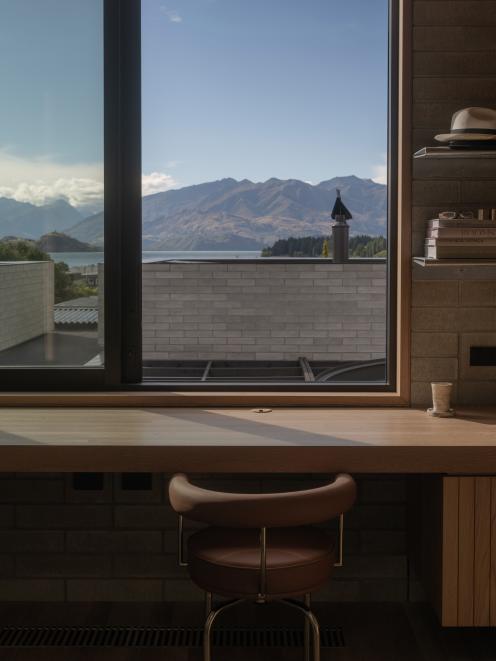
Courtyards, window placement, skylights, large eaves, thermally broken window joinery, low-E glass and integrated bug screens make the building "highly responsive" to seasonal change. There is no air-conditioning or mechanical cooling but operable doors and screens allow for cross-ventilation. In winter, the house is heated via a hydronic heating system, which also controls the water heating. Solar panels and a Tesla battery enhance efficiency, managing power use and running costs.
Shortlisted for the 2024 Southern Architecture Awards, the property is an urban sanctuary in a dynamic landscape and one that future generations can enjoy.
"It’s like a transitional, intergenerational project and somewhere that we can always call home and come back to", Gray says.
